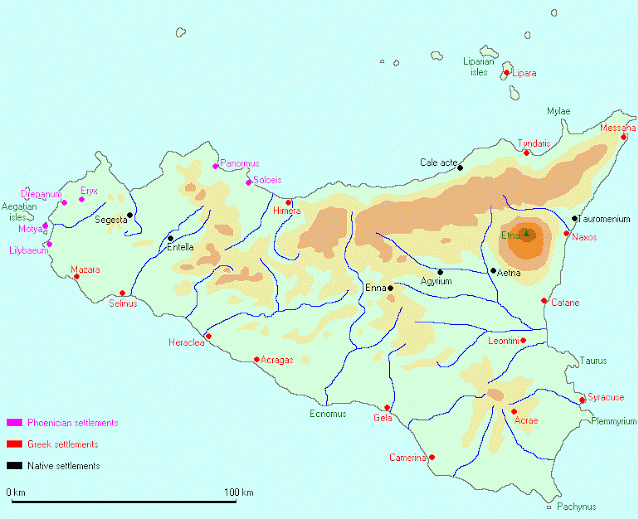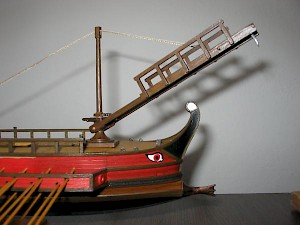Hannibal (2)
Hannibal (Phoenician: Hanba'al, "mercy of Ba'al"; †257): Carthaginian general, played a role during the first years of the First Punic War.

The Greek city of Messana is situated in the northeastern corner of Sicily, where it controls the Strait of Messina. In ca.288, the town had been captured by the Mamertines, a band of Italian mercenaries that had once supported king Agathocles of Syracuse (304-289), and now started to use Messana as a military base from which they plundered the neighboring districts. The Epirote king Pyrrhus defeated them, but was unable to terminate their piratical activities.
In 265, the tyrant of Syracuse, Hiero II, defeated them again and proceeded to besiege their city. Immediately, the Mamertines asked help from Carthage, which gladly intervened and sent its admiral Hannibal, the subject of this article. He happened to be in the neighborhood (on the Aeolian Islands), and proceeded to garrison Messana. From now on, the Carthaginians controlled the Strait.
However, occupation was not the kind of assistance the Mamertines had been hoping for. Rome received now a call for help as well, and decided to intervene, running the risk of full-scale Carthaginian intervention. In 264, the Romans crossed the Strait and liberated Messana. Thus, the First Punic War broke out.
After a show of strength, the Romans secured an alliance with Hiero of Syracuse, and in the summer of 262, the consuls, Lucius Postumius Megellus and Quintus Mamilius Vitulus, laid siege to Acragas in the southern part of Sicily. The city was defended by Hannibal, who sent message after message to Carthage to ask for reinforcements.
In the fifth month, they arrived, led by Hannibal's son Hanno. He immediately captured the Roman supply base, won a cavalry engagement, and built his camp near the Roman siege walls. Two months passed with inconclusive skirmishing, but then, Hanno risked an open battle, which he lost. He was forced to leave the theater of operations (January 261). During the night, Hannibal, benefiting from Roman euphoria, was able to break away from Acragas, which was captured the next day by the Romans. Its inhabitants were sold into slavery.

Yet, the Carthaginians had been able to evacuate many troops, and Hannibal manned a fleet, which he used to fight in the Tyrrhenian Sea. The Romans were now forced to build a navy too and developed a secret weapon, called corvus ("raven" or "crow"). This was a movable bridge with a metal prong that could be dropped onto the deck of a Carthaginian ship. Once the two ships were tied to each other, the naval battle had changed into a land battle. In other words, the Romans used their ships as platforms for fighting. In 260, at Mylae, their consul Gaius Duillius defeated Hannibal, and won Rome's first naval victory ever (text).
Hannibal was recalled, but his fall from favor lasted not very long. In 258, he was sent to Sardinia, which he had to defend against the Romans. However, he was no match for the Roman commander Gaius Sulpicius Paterculus, who defeated him. Hannibal was crucified by his own men.